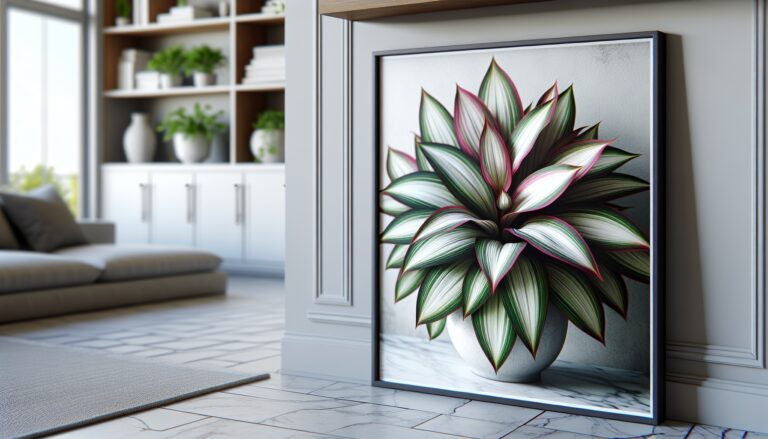Argomenti trattati
Introduction to Tradescantia Nanouk
If you’re searching for a houseplant that combines beauty with low maintenance, look no further than Tradescantia Nanouk. This stunning plant features variegated leaves adorned with stripes of cream and pink, complemented by purple undersides. Its unique appearance makes it a favorite among plant enthusiasts, especially those who appreciate the trailing habits of spiderworts and other tradescantias.
Optimal Growing Conditions
To ensure your Tradescantia Nanouk thrives, it’s essential to provide the right growing conditions. This plant flourishes in bright, indirect sunlight for about six to eight hours a day. Insufficient light can cause the vibrant variegation to fade, resulting in solid green leaves. Additionally, lower light levels can diminish the frequency of its short-lived flowers, which are a delightful bonus to its foliage.
When it comes to soil, well-draining, slightly acidic potting mix is ideal. To enhance drainage, consider mixing in coarse sand or perlite if your soil is dense. Remember, while this plant enjoys moist soil, it does not tolerate soggy conditions. Watering should be done carefully, ensuring the soil remains moist but not overly wet. A good rule of thumb is to water at the base of the plant, keeping the leaves dry to prevent rot.
Watering and Humidity Needs
Finding the right balance in watering is crucial for the health of your Tradescantia Nanouk. If the leaves appear droopy, it may be a sign of overwatering, while brown leaf tips indicate underwatering. Aim to keep the soil moist at least one inch deep, allowing it to drain freely from the pot’s bottom. This plant is drought-tolerant, so it’s better to err on the side of caution when it comes to watering.
Humidity is another important factor. Tradescantia Nanouk prefers a humid environment, which can be achieved by grouping it with other plants or placing it on a pebble tray filled with water. The ideal temperature range for this semi-tropical plant is between 55-75°F, so be mindful of cold drafts and dry winds that could stress the plant.
Propagation and Maintenance Tips
One of the joys of owning a Tradescantia Nanouk is its ease of propagation. You can easily propagate this plant using stem cuttings. Simply snip a healthy 4-inch stem just below a leaf node, remove the lower leaves, and place it in water or potting mix. Regular trimming is also beneficial, as it encourages bushier growth and helps maintain the plant’s overall health. Aim to remove no more than 25% of the plant’s growth at one time to avoid shock.
Be attentive to signs that your plant may need repotting. If you notice roots growing out of the drainage holes or a halt in growth, it may be time to move it to a slightly larger pot. However, Tradescantia Nanouk prefers to be slightly root-bound, so frequent repotting is not necessary. When you do repot, use fresh potting mix and a container only two inches larger than the previous one.
Pest Management
Like many houseplants, Tradescantia Nanouk can be susceptible to pests, particularly spider mites. Early signs of infestation include tiny holes in the leaves or yellowish spots. If you notice minimal damage, a gentle shower can help dislodge the pests. For more severe infestations, insecticidal soap may be necessary. Additionally, be cautious of overwatering, as it can lead to root rot and other fungal diseases. If this occurs, it’s best to take cuttings and start anew with fresh soil.

